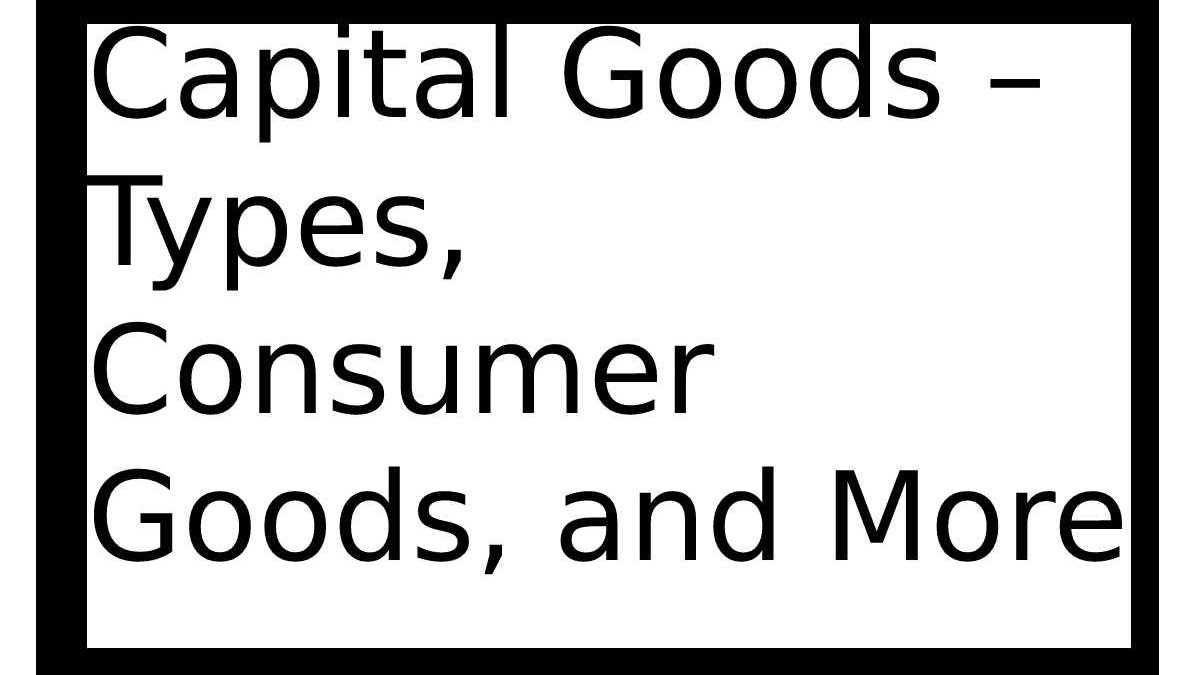Capital Goods – When a company develops products and services that consumers will eventually utilize, it uses capital goods, which are material resources. Include buildings, machinery, equipment, cars, and tools. Products are used to produce finished goods; they do not complete the process.
Table of Contents
Understanding Capital Goods
- Because they are natural objects, [capital goods] are often referred to as tangible assets.
- [Capital goods] are resources businesses use to make items that other companies can use to make finished.
- Automobile, airplane, and machinery producers are included in the sector since these businesses employ their commodities in the production, transportation, and other services they offer.
- In other words, capital products don’t necessarily result in the consumer being satisfied (called utility in economics).
Types of Capital Goods
Machinery and other manufacturing equipment are examples, but they are not permanently fixed assets.
The industrial electronics sector produces a vast range of capital products.
Small wire harness assemblies, air-purifying respirators, and high-resolution digital imaging systems are a few examples.
Additionally, capital items for service industries are produced.
Among the many purchased by service providers are the hair clippers used by hair stylists, paint brushes used by painters, and musical instruments used by musicians.
A class of [capital goods] known as “core ” excludes commodities made for the Defense Department, such as automatic guns, uniforms, and aircraft.
Data on purchases of essential goods are included in the Census Bureau’s monthly Advance Report on Durable Goods Orders.
Capital Goods vs. Consumer Goods
- The finished commodities consumers purchase due to the production process are known as consumer goods.
- Milk, appliances, and clothes are a few examples of consumer goods, even though they fall under various classifications.
- Instead of being sold directly to consumers, commodities are typically employed to create other [goods].
- However, some items, like airplanes, which both consumers and airlines use, might also be considered consumer [goods].
Examples
Here are a few instances of items that can be utilized in various industries.
- Equipment used in factories or assembly lines that make vehicles and trucks
- technology and machinery
- infrastructural types, such as cable or broadband lines and railways
- The coffee makers a coffee shop uses
- Automobiles utilized by a delivery service would be considered a [capital] good, but they would be consumer for a family.
- Restaurant ovens are a [capital good], but they can also be a consumer items.
- Both businesses and consumers can use computers.
- Both consumers and landscaping businesses can use landscaping equipment.

